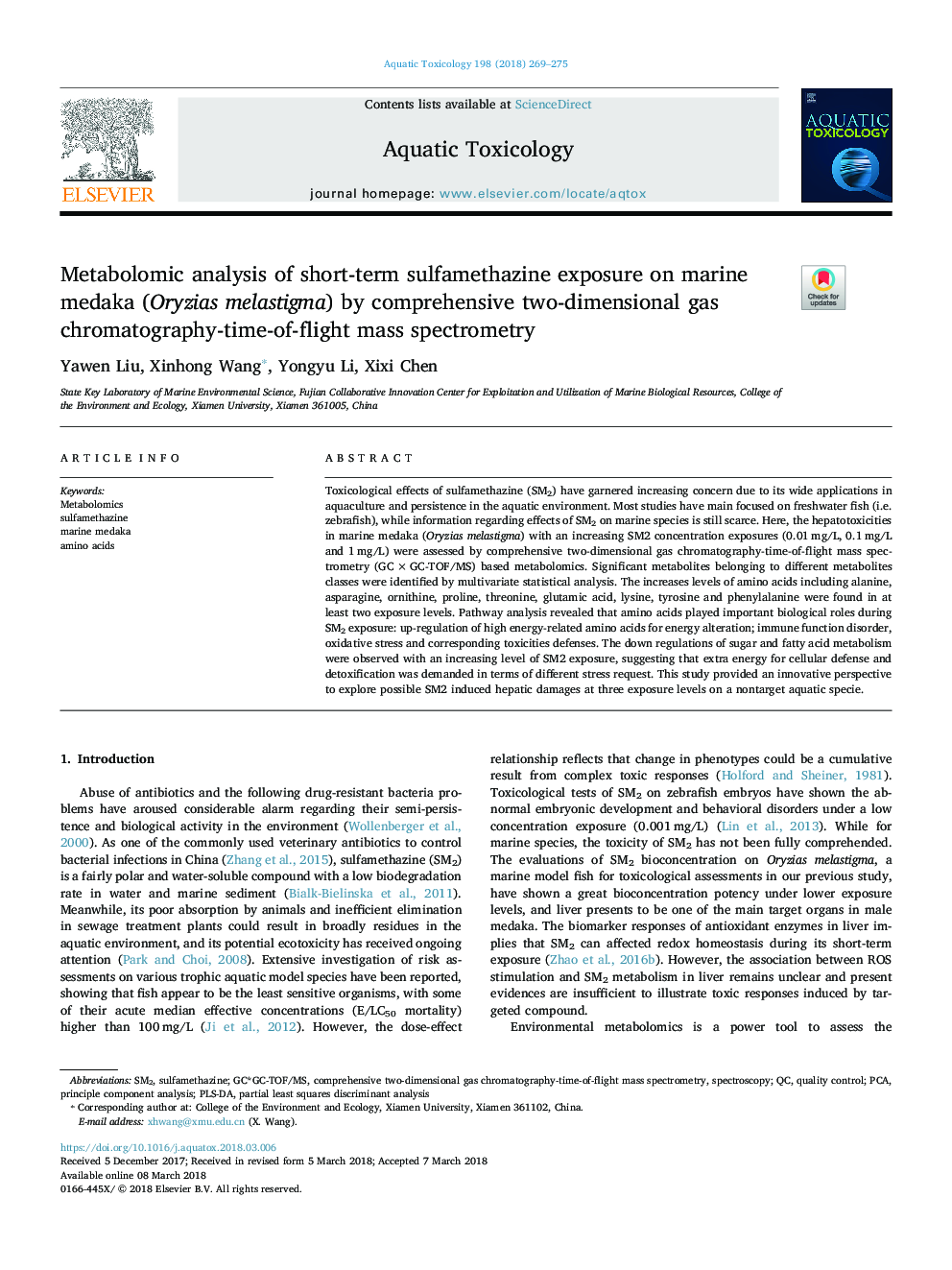| Article ID | Journal | Published Year | Pages | File Type |
|---|---|---|---|---|
| 8883808 | Aquatic Toxicology | 2018 | 7 Pages |
Abstract
Toxicological effects of sulfamethazine (SM2) have garnered increasing concern due to its wide applications in aquaculture and persistence in the aquatic environment. Most studies have main focused on freshwater fish (i.e. zebrafish), while information regarding effects of SM2 on marine species is still scarce. Here, the hepatotoxicities in marine medaka (Oryzias melastigma) with an increasing SM2 concentration exposures (0.01â¯mg/L, 0.1â¯mg/L and 1â¯mg/L) were assessed by comprehensive two-dimensional gas chromatography-time-of-flight mass spectrometry (GCâ¯Ãâ¯GC-TOF/MS) based metabolomics. Significant metabolites belonging to different metabolites classes were identified by multivariate statistical analysis. The increases levels of amino acids including alanine, asparagine, ornithine, proline, threonine, glutamic acid, lysine, tyrosine and phenylalanine were found in at least two exposure levels. Pathway analysis revealed that amino acids played important biological roles during SM2 exposure: up-regulation of high energy-related amino acids for energy alteration; immune function disorder, oxidative stress and corresponding toxicities defenses. The down regulations of sugar and fatty acid metabolism were observed with an increasing level of SM2 exposure, suggesting that extra energy for cellular defense and detoxification was demanded in terms of different stress request. This study provided an innovative perspective to explore possible SM2 induced hepatic damages at three exposure levels on a nontarget aquatic specie.
Keywords
Related Topics
Life Sciences
Agricultural and Biological Sciences
Aquatic Science
Authors
Yawen Liu, Xinhong Wang, Yongyu Li, Xixi Chen,
